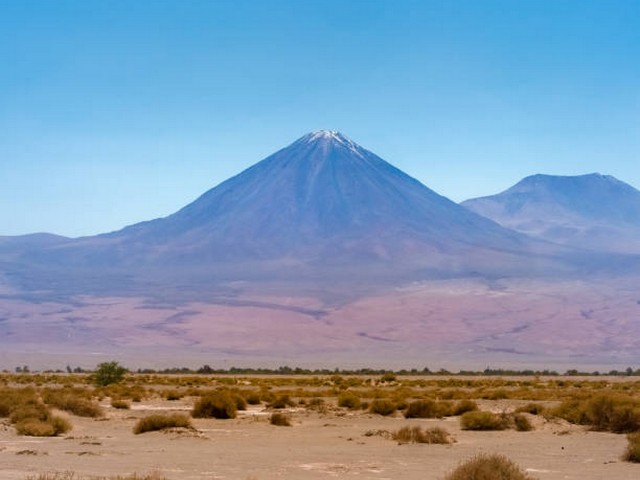How To Handle Fatigue On Kilimanjaro Climbs
Standing proudly as Africa's highest peak, Mount Kilimanjaro beckons adventurers from around the globe with its snow-capped summit and breathtaking landscapes. But as any climber will tell you, the journey to Uhuru Peak is not just a physical challenge; it's a battle against fatigue. At the Kilimanjaro Centre for Trekking and Ecotourism (KCTE), we understand that conquering this majestic mountain means preparing for the mental and physical demands it imposes.
The Battle Against the Mountain: Understanding Fatigue on Kilimanjaro
Climbing Kilimanjaro is a dream for many, but it comes with its set of challenges, fatigue being a prominent one. Fatigue on Kilimanjaro can stem from multiple factors: altitude, physical exertion, dehydration, and the mental toll of the climb. Recognizing the signs of fatigue and knowing how to manage them can dramatically improve your climbing experience.
The Altitude Factor
As you ascend, the air gets thinner, and your body has to work harder to obtain oxygen. This condition, known as altitude sickness, can lead to fatigue. Symptoms often include headaches, nausea, dizziness, and a pervasive tiredness.
Physical Exertion and The Elements
The physical demand of walking for several hours a day, combined with Kilimanjaro's varying temperatures, can drain your energy reserves quickly. Moreover, exposure to the elements such as wind, sun, and possibly even snow, adds to the body's workload.
Strategies to Combat Fatigue on Your Kilimanjaro Adventure
At KCTE, we've honed a series of strategies to help our climbers deal with fatigue. Here's how you can stay energetic and motivated throughout your journey to the roof of Africa.
Pace Yourself: The Pole Pole Philosophy
‘Pole pole' (slowly, slowly) is not just a phrase—it's a vital philosophy on the slopes of Kilimanjaro. Maintaining a pace that allows you to breathe easily is crucial. Overexertion on the lower slopes can deplete your energy reserves before you've reached the summit stages.
Hydration is Key
Dehydration is a common cause of fatigue. The dry mountain air and physical exertion can dehydrate you quicker than you might expect. Drink plenty of water before you feel thirsty, and aim for at least 3-4 liters per day. Our guides at KCTE ensure that all climbers have access to clean, potable water throughout the climb.
Nutritional Needs: Fuel for the Climb
Your body needs the right kind of fuel to tackle Kilimanjaro. High-energy, easily digestible foods are best. We provide balanced meals rich in carbohydrates, proteins, and fats, designed to keep your energy levels high and sustain you throughout the climb.
Sleep and Rest: Recharge Your Batteries
Never underestimate the power of a good night's sleep, especially at altitude. Our itineraries are designed to allow ample rest. Remember, it's equally important to rest whenever necessary during your daily hikes. Listen to your body—if you feel tired, take a break.
Mental Preparation: Visualize Success
Fatigue isn't just physical; it's psychological too. Mental stamina plays a crucial role in overcoming the challenges of Kilimanjaro. At KCTE, we encourage climbers to engage in positive visualization and mindfulness practices to build mental resilience.
Gear Up Right: Choosing the Right Equipment
Proper gear is your best ally against fatigue. Lightweight, breathable, and warm clothing will keep you comfortable and reduce exertion. Invest in good quality hiking boots to prevent foot fatigue, and consider trekking poles to ease the strain on your legs.
Join KCTE: Your Pathway to Conquering Kilimanjaro
Why climb Kilimanjaro with anyone else when you can choose the best? At Kilimanjaro Centre for Trekking and Ecotourism (KCTE), we offer expertly crafted itineraries and personalized support to ensure you conquer Kilimanjaro with energy and enthusiasm. Our experienced guides are trained to help you handle fatigue and make your journey unforgettable.
FAQs: Handling Fatigue on Kilimanjaro
Q1: How long does it take to climb Kilimanjaro, and how does the duration impact fatigue?
A1: Depending on the route, climbing Kilimanjaro can take anywhere from 5 to 9 days. Longer routes have a better acclimatization profile, which helps in reducing fatigue by allowing your body to adapt to altitude gradually.
Q2: Can anyone climb Kilimanjaro, or is it only for experienced climbers?
A2: Kilimanjaro is accessible to climbers of all levels. No technical climbing skills are required, but a good level of physical fitness helps. At KCTE, we provide pre-climb training advice and on-climb support to cater to both novice and experienced climbers.
Q3: What is the best time of year to climb Kilimanjaro for optimal conditions?
A3: The best times to climb Kilimanjaro are during the dry seasons, from January to mid-March and from June to October. These periods offer clearer skies and lower risk of precipitation, making the climb less physically taxing.
Conquer Kilimanjaro with Confidence
Climbing Kilimanjaro is an exhilarating experience that challenges your limits and rewards you with unparalleled views and personal triumphs. Understanding and managing fatigue is key to enjoying the journey to its fullest. With Kilimanjaro Centre for Trekking and Ecotourism (KCTE) by your side, you are set for a memorable adventure that is managed safely and with great attention to your well-being. Ready to tackle Kilimanjaro? Book your climb with KCTE today, and step into the adventure of a lifetime.




